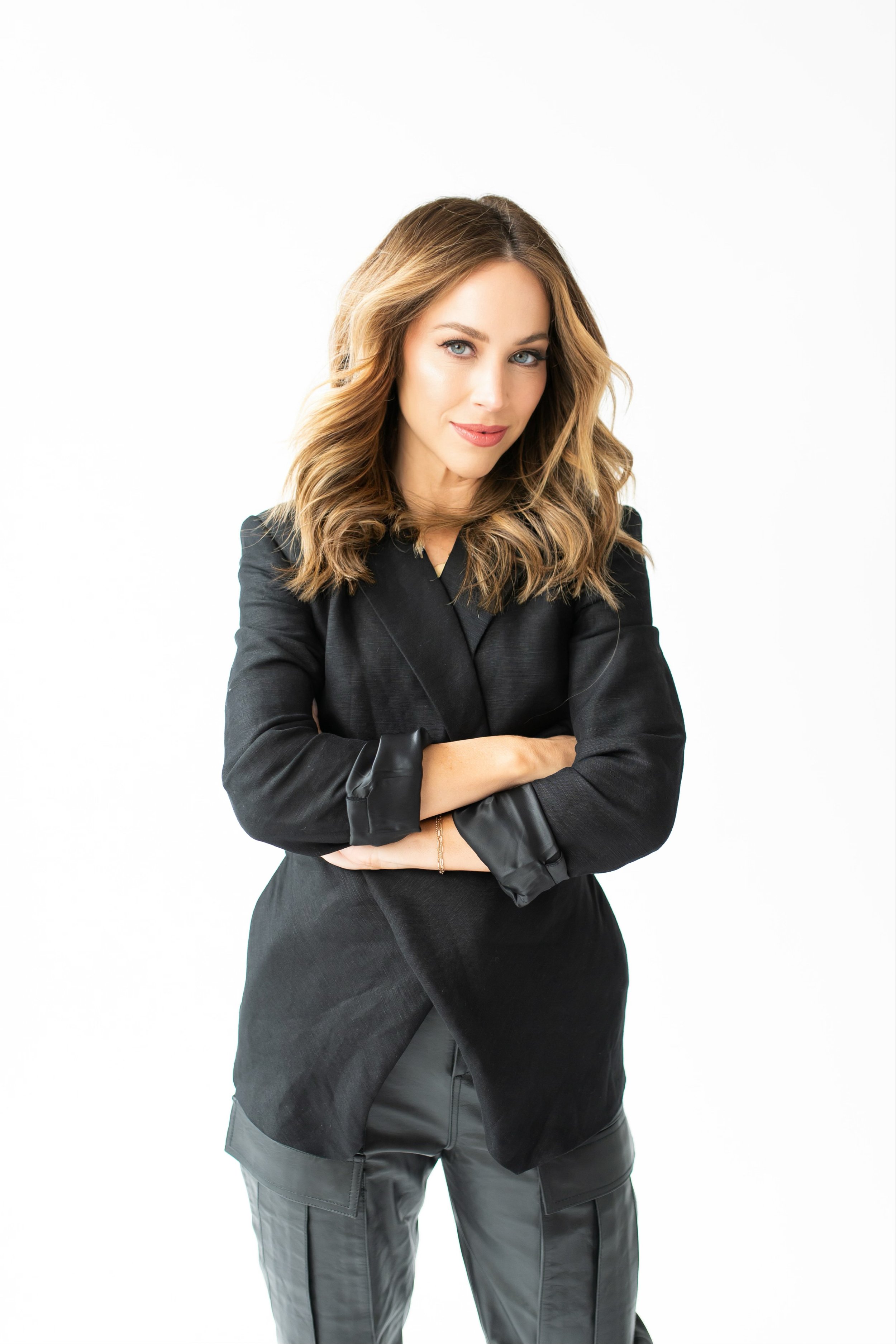3 Things Millennial Women Can Do Right Now to Set Up an Effective Financial Retirement Plan
Take matters into your own hands by planning ahead.
Photo: Color Joy Stock
Retirement. It’s usually thought of as a life milestone that we all reach at age 65. But recent generations are less prepared for retirement than their parents.
Most of the disadvantages facing millennials are circumstantial due to multiple factors, including changes in the economy, rising healthcare costs, student loan debt, and predictable reductions in social security benefits. These are just some of the reasons why retirement might not be as easy as it once was at the age of 65. Some reports have estimated that the new age for retirement is closer to 73 for millennials.
You can forget the traditional ideas of saving minimally and hoping it lasts while relying on your pension. Instead, take matters into your own hands by planning ahead. Finance expert Ashley M. Fox is the founder and CEO at Empify, a social enterprise with the fundamental mission to educate, empower, and modify the mindset of every individual, inspiring them to achieve career, life, and financial success. Ahead, Fox shares her top three tips on how millennial women can effectively set a financial retirement plant.
1. Pick your financial freedom number.
Most people think retirement is an age when, in reality, retirement is a dollar amount. You need to come up with a number that allows you to live the life you want to feel financially free, and the amount you need to feel freedom from attachment, freedom from the obligation of having to go out and make money, and freedom to live life on your terms.
While it’s great to have an age, the focus needs to be on a dollar amount, because even if you hit a certain age, say 65 or now 70, if you don’t have a specific dollar amount, you will struggle and stress through retirement. Only 40 percent of Americans calculate their retirement needs, so it’s critical to have a destination.
Below are three simple steps to calculate your financial freedom number.
Step 1: Think about how much money you want coming in and have coming in every single month to put you in a position where you are comfortable, and not scared or living in survival mode. Think about what amount of money you need to have to think to yourself, “I'm free, I can think, I have clarity and I can do some of the things I have always dreamt of doing.”
Step 2: Reverse engineer your life. Think about what age you want to start living your dream life with your financial freedom number. Of course, we all want to start living that life today, but you want to think about how much time you will need to have that amount of money coming in. Knowing that the life expectancy of the average person in the U.S. is 80 years old, you are typically in retirement for 20 to 25 years. You want to work backward to see how much money you will need on a monthly basis to live the life you want to live. You have to take your monthly financial freedom number times 12 times the number of years you expect to be in retirement.
Step 3: Create your destination. In order to build a roadmap, you must have a destination. It’s important to determine how much you need and then put in place a clear destination of your retirement path. Once you know your destination, you can create a strategy of the best ways for you to reach your financial freedom number. Everyone’s lifestyle and freedom are unique to them, and it should not be based on the government's standards but on personal goals and standards.
2. Look at what you already have.
It is easy for us to think about all the things we have not done, or how far behind we may be, but it’s important to know how far we have come and how close we are to what we actually need to live our financial freedom life. Look at your company’s retirement plan. Most people never review their company's retirement plans but continue to contribute to it every month. It’s important to know what it consists of and how much is in it. You can do this by contacting your HR department or your HR system, and download your quarterly statements for your retirement plan—whether it’s a 401k, 403b, TSP, 457, etc.
You want to know the type of mutual funds and what investments are in the mutual funds. Analyze the performance of the stocks you are investing in. If your employer offers a matching plan. Also, analyze the performance of the stocks you are investing in. If your employer offers a matching plan, and they match up to five percent, definitely take advantage of that and match it. If you put in less, you are leaving free money on the table! When you decide to leave the company then remember to take that money with you. You can always contact HR to find out if your employer matches your investment.
3. Automate your personal savings and investments.
While it’s great to have a retirement plan with your employer, you want to also consider opening up an account yourself. Consider opening up an IRA account, a brokerage, and an online savings account, and be aware of the investments that will go inside those accounts. While retirement may be in the distant future, it’s so important to have a plan. Typically when we make money, we go and pay everyone else first, and that needs to change.
You should have automatic contributions that are taken out every month in a separate account that is not connected to your checking account. If you have an online account you’re in a position to get a higher interest rate. When you have different buckets of money, they are taxed differently. So when it comes time for you to hit your financial freedom number and retire, you’ll have the funds available to live the life you want to live, on your terms.
Overall, diversify your money and have automatic investments set up to ensure you live the retirement you deserve.
“Most people think retirement is an age when, in reality, retirement is a dollar amount.”
—Ashley M. Fox, Founder of Empify
About the Expert: Ashley M. Fox is a former Wall Street analyst based in Philadelphia, PA. She graduated Magna Cum Laude from Howard University, receiving her Bachelor of Business Administration in Finance. After helping manage money for millionaires and billionaires during her career on Wall Street, Ashley developed the urge to want to financially empower the women, men, and families that were oftentimes overlooked, and founded Emplify in October 2013. Ashley is a highly-sought-after international speaker who has been featured on empowerment tours, college campuses, and keynote speaking platforms. She was a financial journalist at Black Enterprise Magazine and currently a contributor at Forbes. Ashley has also been featured in various publications which include the Huffington Post, Glamour, and The Street.
About Empify: Founded in 2013 by Ashley M. Fox, Empify has a fundamental mission to educate, empower, and modify the mindset of every individual, inspiring them to achieve career, life, and financial success. There is often a pattern of generational poverty in our communities when instead, there should be a pattern of generational wealth in all communities. Through the creation of life-altering curricula, informative digital content, and interactive events, Empify teaches basic wealth fundamentals to both adults and children by pouring belief into communities through financial education, inspiration, and implementation.
Love this story? Pin the below graphic to your Pinterest board.
MORE ON THE BLOG
Help! The More I Make the Less I Save
Is your bank account up in flames?
Does it feel like with every passing year, and every (hopefully) subsequent raise and bonus, life's expenses keep going up to? It's not in your imagination.
According to Nerd Wallet, "the rise in the cost of living has outpaced income growth over the past 13 years. Median household income has grown 28% since 2003, but expenses have outpaced it significantly. Medical costs increased by 57% and food and beverage prices by 36% in that same span."
Since 2009, most Americans have said they prefer saving over spending, but the fact remains that the average overall U.S. household debt increasing by 11% in the past decade. Today, the average household with credit card debt has balances totaling $16,883.
To adjust to the growing cost of living, we have to re-examine our relationship to money. It's not the only source of wealth and it's not only for spending. Obviously, you should be spending less than you make. But old models don't apply to new costs. For example when it comes to rent: The general recommendation is to spend about 30% of your gross monthly income (before taxes) on rent. Therefore, if you'll be making $4,000 per month, then your rent should be $4,000 x 0.3, or about $1,200. Those numbers don't really work when rent has been steadily increasing across the country, while wages do not.
So what's a working woman to do? Changing your mind about money is one solution.
Laleh Hancock teaches people how to uncover their own unconsciously held beliefs about money to experience greater wealth. Some of her top tips include:
1. Be willing to explore your beliefs around money
If you grew up in a family that said money is evil, you have to work hard to make money, or men should earn more, you may have adopted it as your own belief, even if it’s not. Ask yourself: If I had no belief about money being good or bad, what are all the different areas money can come into my life or my business?
2. Write a list of things you do and don’t enjoy... and question it all
It’s possible the things you ‘don’t like’ are on the list because other people have said it’s a chore, boring or hard work. Things you thought you didn’t like, but do, could become an extra source of revenue for you. Ask yourself: Do I really enjoy this? Do I really not enjoy this? And what is it that I do or do not enjoy about this, and what would make it more enjoyable?
3. Allow the business to work for you instead of you working for your business
Your business has a consciousness. Instead of trying to control everything in the business, partner with its energy for guidance instead.“Most of us work a million hours thinking we have to control everything in the business,” Laleh says. “If we are willing to allow the business to work for us, however, the business will draw in clients and staff for you.” Ask the business questions every day: What do you require from me today? Who would you like me to contact today?
4. Be open to change every day
Your money or business goals and decisions are not set in concrete. Be open to making a different decision every day, every hour or even every 10 minutes. “You have to know when it’s time to change and be willing to move in a new direction,” Laleh says. Ask yourself: is this what I want to be working on?















